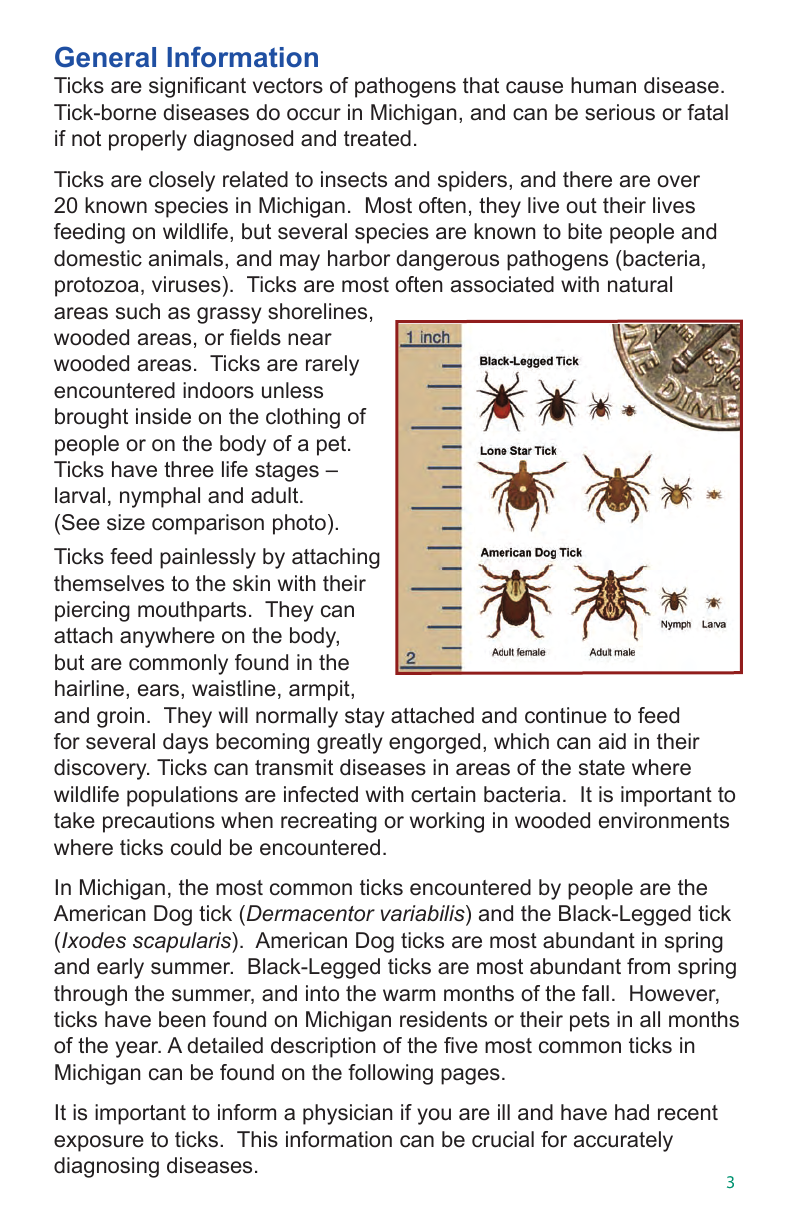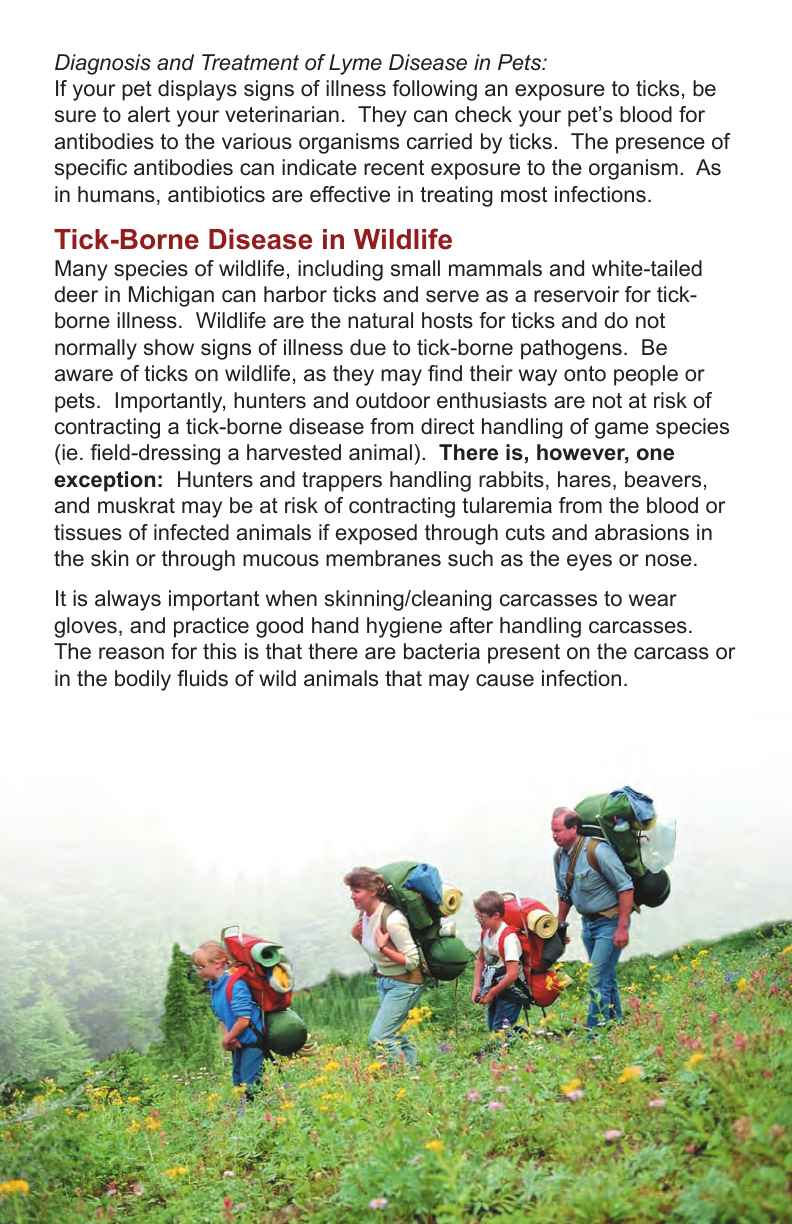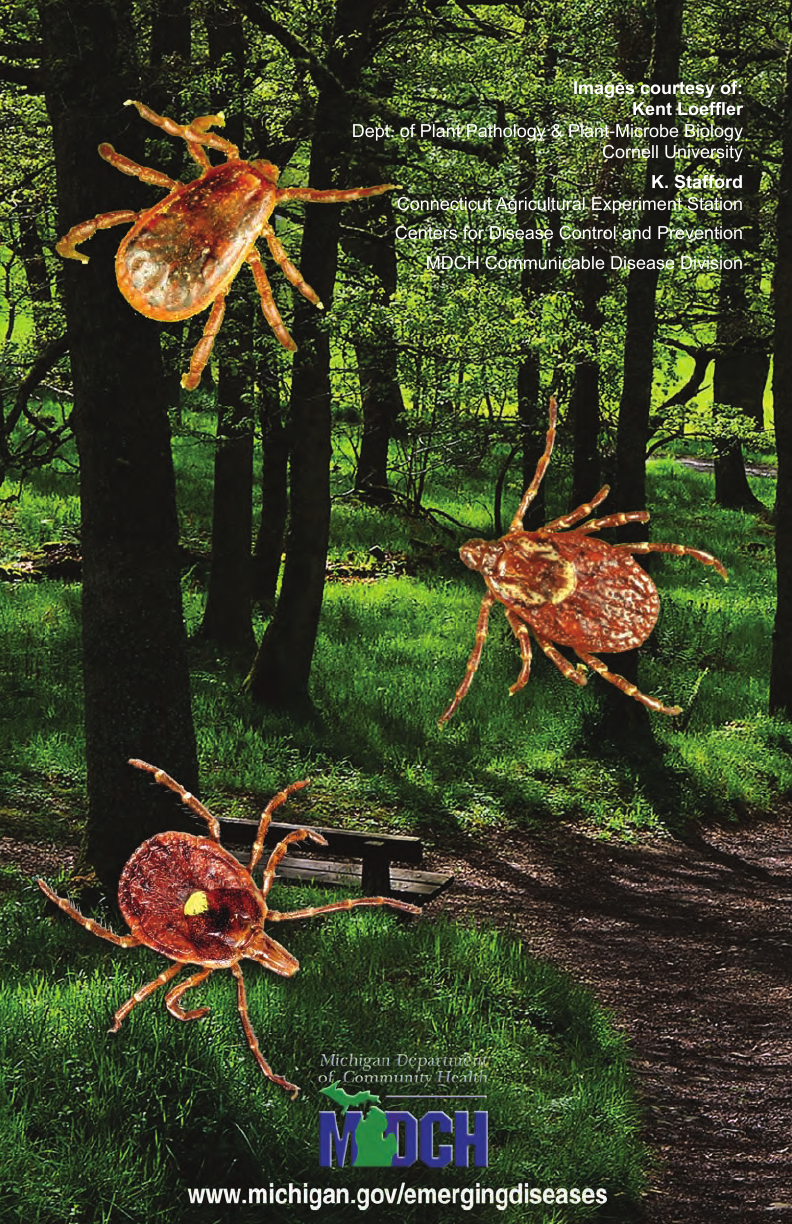Important Tick and Lyme Disease Information
Tick-borne diseases do occur in Michigan. Although Oakland County is not considered endemic (confirmed with infected tick-populations), ticks may be found in outdoor shaded and wooded areas and can be a risk for employees who work in outdoor areas or anyone who recreates in these areas. According to the Oakland County Health Division Lyme Disease FAQ, “personal protective measures against biting ticks are advised as reasonable and prudent during the months of April through November.
At this time, Oakland County is NOT considered endemic or at risk to become endemic.
Prevention is Key:
Michigan Department of Public Health provides tips on Treatment and Prevention.
Remember…
Ticks that can transmit Lyme disease ( Blacklegged tick) prefer habitats that are shaded or wooded.Deciduous trees, brushy undergrowth, and abundant leaf-litter characterize these habitats.
Ticks can also be found in grassy or brush dominated areas as well. Deer and rodent hosts are normally abundant in these areas, and must be present to maintain the cycle of Lyme disease in the wildlife population.
In southwest Michigan, blacklegged ticks have been found in habitats characterized by sandy soil, oak or maple dominated tree cover, and an abundance of rodents and white-tailed deer.
If you are going to be in areas that may be tick infested, there are several ways you can protect yourself:
Wear light colored clothing so ticks can be spotted more easily, and removed before attachment. Wearing long sleeved shirts and pants tucked into socks or boot tops can be helpful in keeping ticks from reaching your skin. Ticks are usually located close to the ground, so boots or shoes and not sandals, are recommended.
Repel Ticks with DEET or Permethrin
Use repellents that contain 20% or more DEET (N, N-diethyl-m-toluamide) on the exposed skin for protection that lasts up to several hours. Always follow product instructions.
Use products that contain permethrin on clothing. Treat clothing and gear, such as boots, pants, socks and tents. It remains protective through several washings. Pre-treated clothing is available and remains protective for up to 70 washings. Other repellents registered by the Environmental Protection Agency (EPA) may be found at http://cfpub.epa.gov/oppref/insect/
Find and Remove Ticks from Your Body
Bathe or shower as soon as possible after coming indoors (preferably within two hours) to wash off and more easily find ticks that are crawling on you.
Conduct a full-body tick check using a hand-held or full-length mirror to view all parts of your body upon return from tick-infested areas. Parents should check their children for ticks under the arms, in and around the ears, inside the belly button, behind the knees, between the legs, around the waist, and especially in their hair.
Examine gear and pets. Ticks can ride into the home on clothing and pets, then attach to a person later, so carefully examine pets, coats, and day packs. Tumble clothes in a dryer on high heat for an hour to kill remaining ticks.
Consult the CDC web-site for quick Tick Removal Tips.
You can even create a tick-free zone around your home!
Fact Sheets and Information for Posting:
CDC Lyme Disease Prevention Fact Sheet for Outdoor Workers:
CDC Lyme Disease Prevention Fact Sheet for Golfers:
CDC Lyme Disease: A Public Information Guide:
Michigan Department of Public Health: Ticks and Your Health Brochure:
Oakland County Health Division: Lyme Disease Fact Sheet:
If you have any questions or concerns, please contact the Office of Environmental Health & Safety at extension (248) 370-4196 or Graham Health Center at (248) 370-2341.
http://www.oakland.edu/?id=18363&sid=189




















